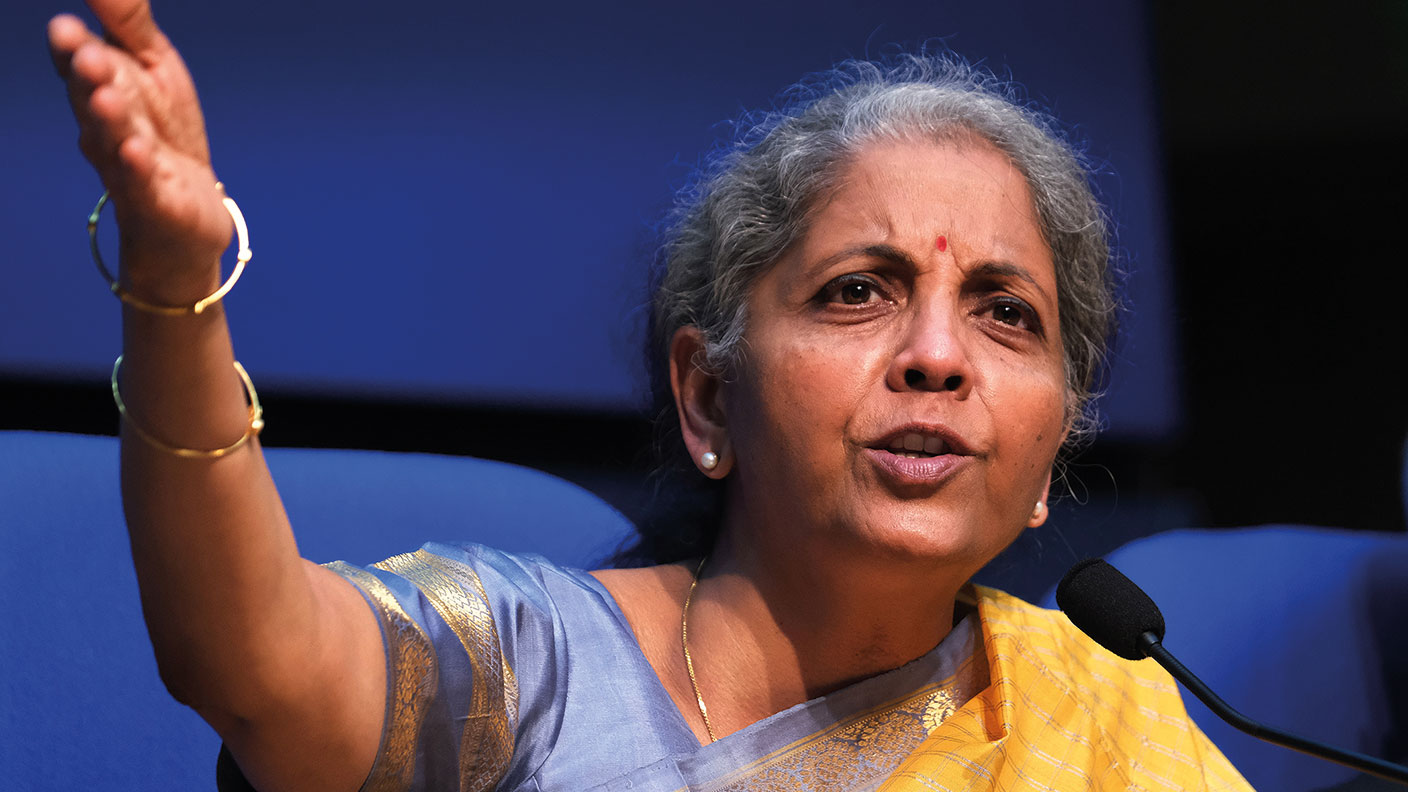India’s stockmarket mania leaves equities vulnerable
India's BSE Sensex stockmarket index has gained 93% since March 2020. But the gains are not justified by the economic fundamentals.

“Stockmarket mania” is in full flower in India, says Mike Bird in The Wall Street Journal. The BSE Sensex stock index has gained 93% since March 2020. Last month it closed above 50,000 points for the first time.
The BSE Sensex’s gains have matched those of America’s S&P 500 since early last year, notes Bird. This rally is not justified by the economic fundamentals: GDP crashed by 24% in the second quarter of last year. Poverty has soared. In the country’s banking sector, long the economy’s Achilles’ heel, gross non-performing assets are set to rocket as the pandemic chokes off activity. Indian equities are priced for perfection, leaving them vulnerable to bad news ahead.
Modi’s magic money tree
Last month’s government budget provided an extra fillip for Indian shares. Finance minister Nirmala Sitharaman is turning on the fiscal taps, with the deficit set to hit 9.5% of GDP this fiscal year and 7% next year. Investors were pleased to be spared rumoured tax hikes.
MoneyWeek
Subscribe to MoneyWeek today and get your first six magazine issues absolutely FREE

Sign up to Money Morning
Don't miss the latest investment and personal finances news, market analysis, plus money-saving tips with our free twice-daily newsletter
Don't miss the latest investment and personal finances news, market analysis, plus money-saving tips with our free twice-daily newsletter
New Delhi says it can “raise truckloads of money” by selling off stakes in state assets, says Prathamesh Mulye for Quartz India. Planned divestments include a life insurer, several logistics businesses and “beleaguered national carrier” Air India. It remains to be seen whether words are met with action: “Some of these names have been floating around for... years now but haven’t found any takers.”
It is 30 years since India began to tear up its cumbersome “licence raj” and put itself on a faster growth track, says Banyan in The Economist. Yet in recent years reforms have slowed and “even, in some respects, reversed” as Indian prime minister Narendra Modi’s government resurrects “older ideas of protectionism and state control”.
Modi is giving up his longstanding commitment to fiscal discipline, says Mihir Sharma on Bloomberg. Government deficits will remain elevated for years. India’s debt-to-GDP ratio looks on course to breach 90%. The government argues that it doesn’t matter if it overspends so long as the money is invested. That is a dangerous game for India to play. Unlike other big economies, India has neither a reserve currency nor a deflation problem. Inflation topped 7% last autumn: “Numbers more associated with Latin American stagnation than your typical Asian tiger.”
Things could come to a head if ratings agencies decide to downgrade India’s credit rating in the next few years, says Reshma Kapadia in Barron’s. The current rally certainly has momentum. Morgan Stanley thinks the BSE Sensex could hit 55,000 by the end of the year, but “investors should tread carefully”. As Bird notes, the country’s shares are trading on 24 times forward earnings, making them more expensive than America’s grossly overvalued S&P 500.
Get the latest financial news, insights and expert analysis from our award-winning MoneyWeek team, to help you understand what really matters when it comes to your finances.
Alex is an investment writer who has been contributing to MoneyWeek since 2015. He has been the magazine’s markets editor since 2019.
Alex has a passion for demystifying the often arcane world of finance for a general readership. While financial media tends to focus compulsively on the latest trend, the best opportunities can lie forgotten elsewhere.
He is especially interested in European equities – where his fluent French helps him to cover the continent’s largest bourse – and emerging markets, where his experience living in Beijing, and conversational Chinese, prove useful.
Hailing from Leeds, he studied Philosophy, Politics and Economics at the University of Oxford. He also holds a Master of Public Health from the University of Manchester.
-
 Rightmove: Asking prices set to rise 2% in 2026 after post-Budget market rebound
Rightmove: Asking prices set to rise 2% in 2026 after post-Budget market reboundBuyers and sellers who held off in anticipation of the Budget will come back to the market and contribute to asking prices increasing next year, according to Rightmove
-
 Coreweave is on borrowed time
Coreweave is on borrowed timeAI infrastructure firm Coreweave is heading for trouble and is absurdly pricey, says Matthew Partridge
-
 Coreweave is on borrowed time
Coreweave is on borrowed timeAI infrastructure firm Coreweave is heading for trouble and is absurdly pricey, says Matthew Partridge
-
 Renewable energy funds are stuck between a ROC and a hard place
Renewable energy funds are stuck between a ROC and a hard placeRenewable energy funds were hit hard by the government’s subsidy changes, but they have only themselves to blame for their failure to build trust with investors
-
 Profit from document shredding with Restore
Profit from document shredding with RestoreRestore operates in a niche, but essential market. The business has exciting potential over the coming years, says Rupert Hargreaves
-
 The war dividend – how to invest in defence stocks as the world arms up
The war dividend – how to invest in defence stocks as the world arms upWestern governments are back on a war footing. Investors should be prepared, too, says Jamie Ward
-
 Literacy Capital: A trust where great returns fund a good cause
Literacy Capital: A trust where great returns fund a good causeThere’s plenty to like about specialist private-equity trust Literacy Capital, says Max King
-
 An AI bust could hit private credit – could it cause a financial crisis?
An AI bust could hit private credit – could it cause a financial crisis?Opinion Private credit is playing a key role in funding data centres. It may be the first to take the hit if the AI boom ends, says Cris Sholto Heaton
-
 8 of the best ski chalets for sale now
8 of the best ski chalets for sale nowThe best ski chalets on the market – from a traditional Alpine-style chalet in Switzerland to an award-winning Modernist building in Japan’s exclusive ski areas
-
 Did COP30 achieve anything to tackle climate change?
Did COP30 achieve anything to tackle climate change?The COP30 summit was a failure. But the world is going green regardless, says Simon Wilson